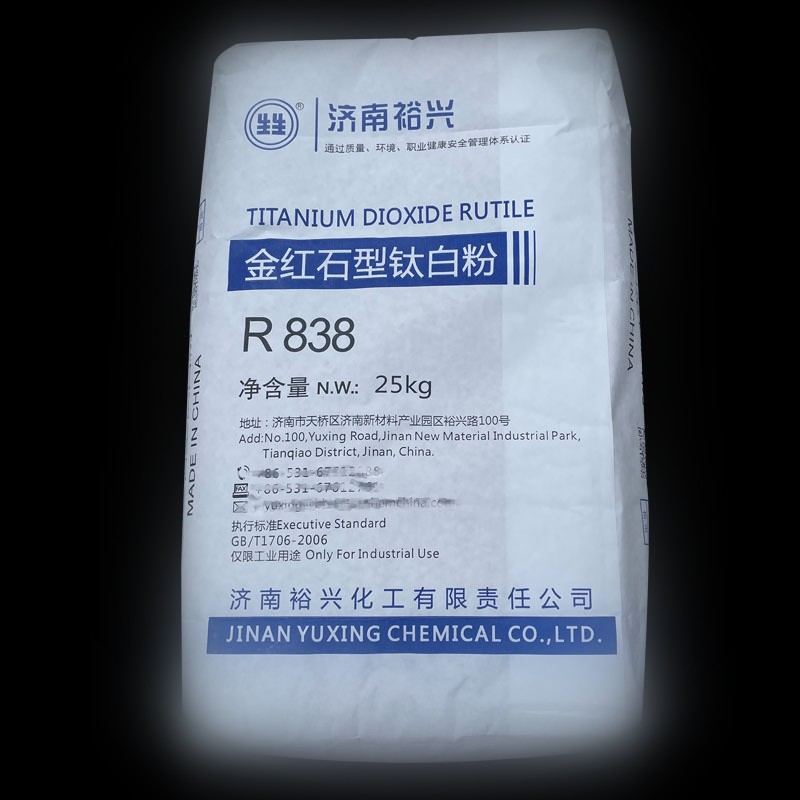
Privacy statement: Your privacy is very important to Us. Our company promises not to disclose your personal information to any external company with out your explicit permission.

The plastic industry is the second largest user of Titanium Dioxide, accounting for about 18% of the world's total demand for titanium dioxide. It is the fastest growing field of titanium dioxide application in recent years, with an average annual growth rate of 6%. Among the more than 500 titanium dioxide grades worldwide, more than 50 grades belong to plastic specific types. UPVC profiles, an important branch of plastics and an important application field of titanium dioxide in plastics, have developed at an astonishing speed in China in the past decade, increasing at an average rate of 10%. In 2008, the national production of profiles was 3.8 million tons, with approximately 135000 tons of rutile type TiO2 used. According to the annual increase of 10% in the national profile industry, the demand for TiO2 in the national profile industry was about 150000 tons in 2009, but it has reached 165000 tons in 2010.
Adding titanium dioxide to plastic can improve the heat resistance, light resistance, and weather resistance of plastic products, improve their physical and chemical properties, enhance their mechanical strength, and extend their service life. Moreover, in recent years, with the continuous strengthening of people's awareness of environmental protection and energy conservation, the pace of replacing steel with plastic will be faster and faster in the future, and the proportion of plastic products in our lives will also be increasing.
The role of titanium dioxide in the plastic industry mainly has two aspects. One is its basic use as a white pigment, providing a covering effect (white coloring); The second function is to block ultraviolet rays, which can be used as a UV screening agent to provide good weather resistance for plastic products used outdoors. The titanium dioxide used in the production of ordinary plastics does not require weather resistance, but focuses more on pigment performance requirements.
For titanium dioxide used in plastics, it is required to have fine particles and good dispersibility; It has good heat resistance and light resistance, and does not change color during the heating of plastic molding and the production of finished products under sunlight exposure and use. Most plastics use titanium dioxide with a relatively fine particle size, and typically coatings use titanium dioxide with a particle size of 0.2-0.4 μ m. The particle size of titanium dioxide used in plastics is 0.15-0.3 μ m. This can obtain a blue background, which has a masking effect on most resins with yellow phase or those prone to yellowing. Moreover, using titanium dioxide instead of lithopone can reduce the consumption of white pigment by 50% to 70%.
Comparison of Two Processes of Titanium Dioxide in Plastic Applications
It is understood that domestic plastic products, especially high-end products, still mainly use imported chlorinated titanium dioxide. Chlorinated titanium dioxide not only has better surface properties such as whiteness than sulfuric ACID titanium dioxide, but also has incomparable advantages in covering power, dispersibility, and processability, especially for outdoor UPVC plastic profile products, compared to chlorinated rutile products.
However, due to the characteristics of plastic products, the considerations for selecting titanium dioxide are different from those for other coatings, inks, paints, etc. The main consideration should be based on the technical requirements of plastic products. For plastic specific products, it is necessary to carefully select titanium dioxide products that are suitable for their special purposes according to their product requirements, in order to avoid certain impacts on the performance of plastic products.
June 25, 2023
April 03, 2023
October 24, 2024
October 12, 2024
With the development of modern ceramic technology, people have put forward higher requirements for the performance of ceramics. Sodium tripolyphosphate is an additive commonly used in architectural...
What is fumed silica Fumed silica is silicon dioxide produced by the vapor phase method, commonly known as fumed silica. It is amorphous nano-sized particles with surface hydroxyl and adsorbed water...
introduction In recent years, with the rapid development of the coating industry, people have increasingly high requirements for the performance of titanium dioxide. They not only require titanium...
Paint industry: Titanium dioxide is an inorganic white pigment mainly composed of titanium dioxide, which can be divided into three types according to crystal morphology: perovskite, anatase, and...
Email to this supplier
June 25, 2023
April 03, 2023
October 24, 2024
October 12, 2024

Privacy statement: Your privacy is very important to Us. Our company promises not to disclose your personal information to any external company with out your explicit permission.

Fill in more information so that we can get in touch with you faster
Privacy statement: Your privacy is very important to Us. Our company promises not to disclose your personal information to any external company with out your explicit permission.